What color is a healthy poop. What Color is Healthy Poop? Understanding Stool Colors and Their Meanings
What do different poop colors indicate about your health. How can diet affect stool color. When should you be concerned about changes in your poop color. What causes black, red, or pale-colored stools.
The Spectrum of Stool Colors: What’s Normal and What’s Not
Stool color can vary widely and is often influenced by what we eat. While brown is considered the “normal” color for poop, shades can range from light yellow to dark brown or even green. Understanding what different stool colors mean can provide valuable insights into your digestive health and overall well-being.
Why is poop normally brown?
The typical brown color of stool is primarily due to the presence of bile in your digestive system. Bile, a yellowish-green fluid produced by the liver, plays a crucial role in fat digestion. As it travels through your digestive tract, it undergoes chemical changes, ultimately resulting in the familiar brown hue of healthy poop.

Green Poop: Causes and Considerations
Green stools are often harmless and can be attributed to various factors. In many cases, they’re simply a result of what you’ve consumed recently.
Common causes of green poop:
- Consuming green leafy vegetables like spinach or kale
- Ingesting food or drinks with green food coloring
- Taking iron supplements
- Rapid intestinal transit time, causing bile to pass through before it can be fully broken down
Is green poop ever a cause for concern? Generally, occasional green stools are not worrisome. However, if accompanied by other symptoms like diarrhea or abdominal pain, it’s wise to consult a healthcare professional.
Yellow Stools: When to Pay Attention
Yellow poop can be normal for some individuals, especially infants who are breastfeeding. However, certain characteristics of yellow stools may indicate underlying issues.
What does greasy, smelly yellow poop mean?
If your yellow stools appear greasy and have a particularly foul odor, it could suggest malabsorption or excess fat in the stool. This might be a sign that your body isn’t properly digesting fats, potentially due to conditions like celiac disease or pancreatic insufficiency.

Can diet cause yellow poop? While diet doesn’t directly cause yellow stools, certain dietary factors can contribute. For instance, individuals with celiac disease who consume gluten may experience yellow, fatty stools as a result of intestinal damage and malabsorption.
Pale or Clay-Colored Stools: Potential Red Flags
Pale or clay-colored stools can be concerning, as they often indicate a lack of bile in the stool. This could suggest problems with bile production, storage, or release.
What causes pale stools?
- Certain medications, such as bismuth subsalicylate (Pepto-Bismol)
- Barium sulfate, used in some diagnostic imaging procedures
- Liver diseases like hepatitis
- Blockages in the bile ducts due to gallstones or tumors
- Biliary atresia, a congenital condition affecting bile ducts
When should you be concerned about pale stools? If you consistently notice pale or clay-colored stools and haven’t recently taken medications known to cause this effect, it’s important to consult a healthcare provider promptly.

Black Stools: Distinguishing Between Benign and Serious Causes
Black stools can range from harmless dietary effects to serious medical conditions. It’s crucial to identify the underlying cause to determine if medical attention is necessary.
Benign causes of black stools:
- Consuming black licorice
- Eating large quantities of blueberries
- Taking iron supplements
- Using medications containing bismuth subsalicylate
When are black stools a cause for concern?
Black, tarry stools (medically known as melena) can indicate bleeding in the upper gastrointestinal tract. This may be caused by:
- Bleeding stomach ulcers
- Esophageal bleeding from severe acid reflux
- Noncancerous tumors in the upper GI tract
- Gastrointestinal cancers
If you experience black, tarry stools that can’t be explained by dietary factors or medications, it’s crucial to seek immediate medical attention.
Red or Reddish Stools: Identifying the Source
The appearance of red or reddish stools can be alarming, but it’s important to consider dietary factors before assuming the worst.
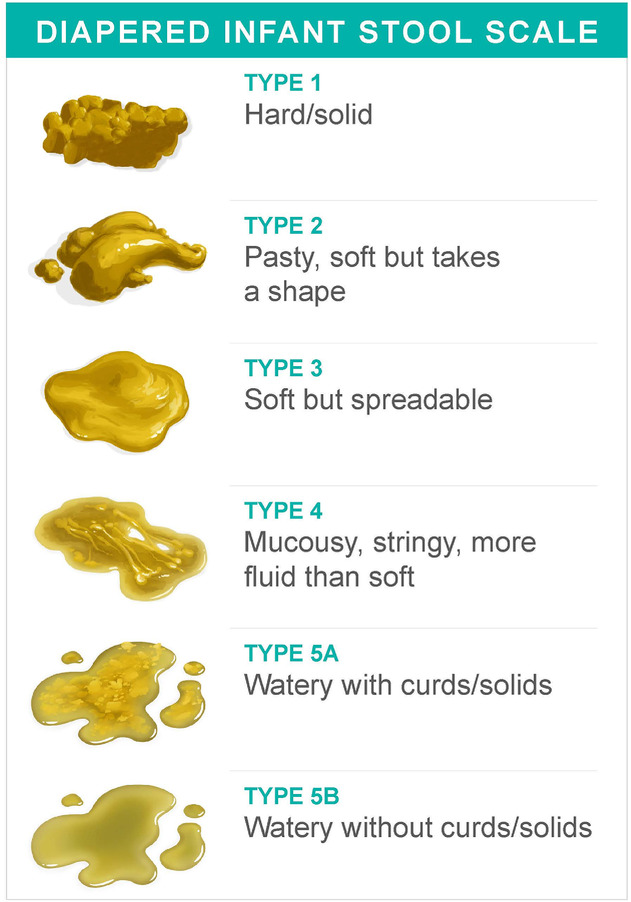
Common dietary causes of red stools:
- Consuming beets
- Eating tomato-based foods
- Drinking red-colored beverages
- Consuming red gelatin desserts
When should red stools be a cause for concern? If you haven’t consumed any red-colored foods or beverages recently, red stools could indicate bleeding in the lower gastrointestinal tract. This may be caused by:
- Hemorrhoids
- Anal fissures
- Inflammatory bowel diseases like Crohn’s disease or ulcerative colitis
- Colorectal polyps or cancer
If you notice persistent red stools without an obvious dietary cause, it’s important to consult a healthcare provider for further evaluation.
Orange Stools: Unusual but Often Harmless
Orange stools are less common but can occur due to various factors. In most cases, they’re not a cause for concern.
What causes orange poop?
- Consuming foods high in beta-carotene, such as carrots and sweet potatoes
- Eating foods with artificial orange coloring
- Taking certain medications or supplements
Is orange poop ever a sign of a health problem? While rare, orange stools can sometimes indicate issues with bile production or release. If orange stools persist or are accompanied by other symptoms like abdominal pain or weight loss, it’s advisable to consult a healthcare professional.
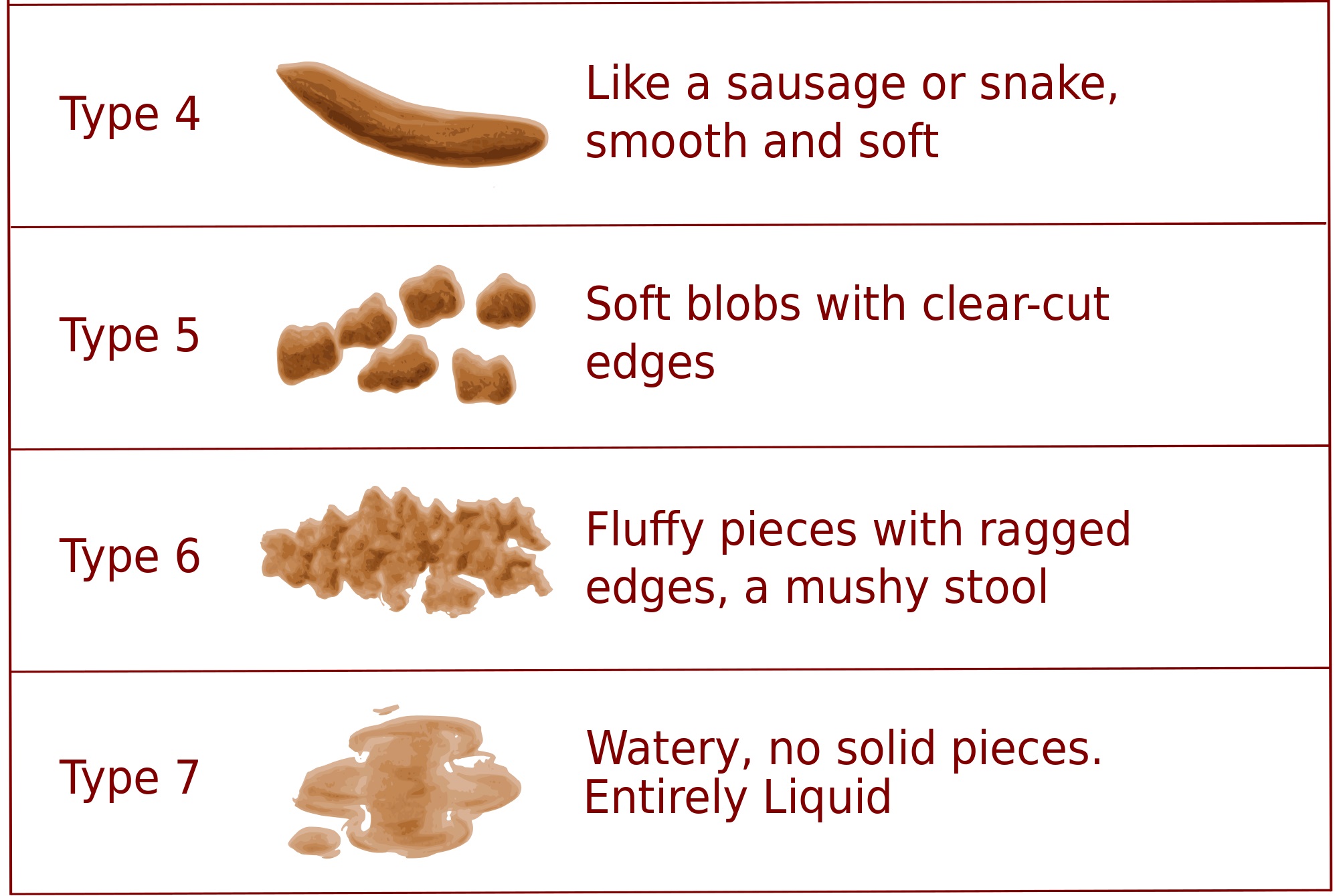
When to Seek Medical Attention for Stool Color Changes
While many stool color changes are benign and temporary, certain situations warrant medical attention:
- Persistent changes in stool color lasting more than a few days
- Black, tarry stools not explained by diet or medications
- Bright red blood in the stool
- Pale or clay-colored stools
- Any stool color changes accompanied by other symptoms like abdominal pain, fever, or unexplained weight loss
How can you keep track of stool color changes? It’s helpful to maintain a diary of your bowel movements, noting any unusual colors and potential dietary or medication-related causes. This information can be valuable when discussing concerns with your healthcare provider.
The importance of regular check-ups
Regular health check-ups can help detect potential digestive issues early. During these visits, don’t hesitate to discuss any concerns about your bowel habits or stool appearance with your healthcare provider. They can provide personalized advice and determine if further testing is necessary.

Understanding the various factors that influence stool color can help you better monitor your digestive health. While most color changes are harmless and temporary, being aware of potential red flags can ensure prompt medical attention when needed. Remember, your stool can provide valuable insights into your overall health, so don’t ignore persistent changes or concerning symptoms.
What Do Different Poop Colors Mean?
Written by Hope Cristol
- What Do Different Stool Colors Mean?
- Normal Poop Color
- Green Poop
- Yellow Poop
- White, Pale, or Clay-Colored Poop
- Black Poop
- Red or Reddish Poop
- Orange Poop
- When to Get Help for Poop Color Changes
- More
Different stool colors can mean different things, mostly depending on what you’ve eaten.
You’d probably notice if your poop is a different hue than normal. But what does it mean if it’s green? What about red, yellow, white, or black? Or orange?
Most of the time, minor changes in the color of your waste are due to diet. After all, we don’t eat the same thing at every meal, every day. But sometimes a color change can signal a minor health issue. In rare cases, it means something serious is wrong in your digestive system.
If the color you see before you flush worries you, call your doctor.
Poop is normally brown. The color is the result of what you eat and how much bile is in your stool.
The color is the result of what you eat and how much bile is in your stool.
Bile is a fluid your liver makes to digest fats. It starts out as a yellowish green color. But as the pigments that give bile its color travel through your digestive system, they go through chemical changes and turn brown.
Your poop can sometimes have a slightly greenish hue, or even be a more vivid green. Most of the time, green or greenish poop is normal.
Is your diet causing green poop?
Think back on what you’ve been eating. These foods and supplements can cause your poop to be green:
- Green veggies, like spinach or kale
- Green food coloring, such as in drink mixes or ice pops
- Iron supplements
Other causes of green poop
If you have green diarrhea, the color of your food may not be to blame. It’s likely that your meal moved through your gut too quickly, so the fat-digesting bile didn’t have time to turn brown.
There may be times when your poop looks more yellow than brown.
This shade is also normal for many people. It’s common for babies, especially those who breastfeed. But if you have yellow poop that looks greasy and smells very bad, it may have too much fat. That could be a sign your body isn’t digesting food properly.
Is your diet causing yellow poop?
Indirectly, your diet could cause yellow poop. If you have celiac disease, your body can’t handle a protein called gluten, which is in wheat, barley, and rye. If you have the condition and eat foods that have gluten, like many breads, pastas, and cookies, your intestines won’t work as they should. So, if you’re eating those foods, and your poop is yellow, it may be time to see a doctor.
Other causes of yellow poop
There may be other causes of yellow poop that’s greasy and smelly. If it happens to you often, tell your doctor.
Sometimes, poop may not have much color at all.
Is your diet causing pale poop?
If your poop is pale, it’s not likely directly due to a food. But medicines for diarrhea like bismuth subsalicylate (Kaopectate, Pepto-Bismol) can sometimes cause pale or clay-colored poop. So can barium, a chalky liquid you drink before you get X-rays of the upper part of your digestive tract.
Other causes of pale poop
A more serious cause is a lack of bile in your stool. (Remember, bile gives poop its brown color.) Your body makes bile in the liver, stores it in the gallbladder, and releases it into your small intestine to help digest your food. If there’s not enough of it to give your poop its typical brown color, it could be a sign of a problem along the way.
Liver disease, such as hepatitis, can keep bile from getting into your body waste. So can a blockage in the tubes (called ducts) that carry bile. This can happen because of:
- Gallstones
- A tumor
- A condition you’re born with called biliary atresia
Babies’ poop is black for the first few days after they’re born. Otherwise, it may be because you ate something very dark-colored or took a medicine or supplement that causes black poop. But this color can be a sign of a more serious problem: bleeding in the upper part of your digestive tract.
Otherwise, it may be because you ate something very dark-colored or took a medicine or supplement that causes black poop. But this color can be a sign of a more serious problem: bleeding in the upper part of your digestive tract.
Is your diet causing black poop?
Foods and supplements that turn poop black include:
- Black licorice
- Blueberries
- Iron supplements
Medicines that have bismuth subsalicylate (Kaopectate, Pepto-Bismol) can also cause very dark stools.
Other causes of black poop
Poop that looks like tar is often a sign of bleeding in the digestive tract. Some causes include:
- Bleeding from stomach ulcers
- Bleeding sores in your esophagus from acid reflux
- Bleeding from noncancerous tumors in the upper GI tract
- Cancer
If you don’t think black poop came from what you ate, you need to talk to your doctor.
If you see red or reddish poop in the toilet, don’t be alarmed right away. First ask yourself if you’ve had red foods lately.
First ask yourself if you’ve had red foods lately.
Is your diet causing red or reddish poop?
Several foods can change the color of your stool to a pink or reddish color:
- Beets
- Tomato soup
- Gelatin dessert
- Red drinks
Other causes of red or reddish poop
If you don’t think your diet is the cause, the red you see may be blood. And if it’s bright red, the blood likely comes from the lower part of your digestive tract. Common causes include:
- Noncancerous tumors
- Cancer
- Inflammation in the colon, called colitis
- Growths called polyps in your colon
- Conditions caused by small sacs in the wall of the colon, called diverticular disease
- Hemorrhoids
Call your doctor if you see red that’s probably not from food you ate.
Poop can often come out the color of the food that went in, especially if you have diarrhea. If your poop has an orange hue, it’s most likely due to some orange foods.
Is your diet causing orange poop?
Foods that have beta-carotene can turn your poop orange, such as:
- Carrots
- Winter squash
- Pumpkin
- Sweet potatoes
Foods with orange coloring, such as sodas, candy, or gelatin dessert, can also give your poop an orange color.
Also, antibiotics and antacids that have aluminum hydroxide in them can make your stool orange.
Other causes of orange poop
Rarely, poop can be orange if you have a problem with your liver that causes it to make less bile than normal, or a blockage that keeps bile from leaving the liver and entering your system. But usually, if this is the case, your poop will be pale or clay-colored.
Most of the time, poop that’s a different color from what you’re used to isn’t something to worry about. It’s rare for it to be a sign of a serious condition in your digestive system. But if it’s white, bright red, or black, and you don’t think it’s from something you ate, call your doctor.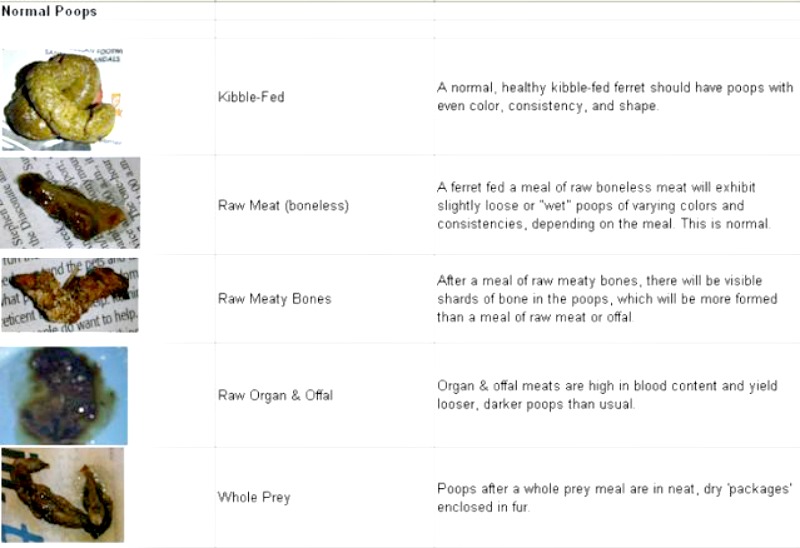
Top Picks
What Do Different Poop Colors Mean?
Written by Hope Cristol
- What Do Different Stool Colors Mean?
- Normal Poop Color
- Green Poop
- Yellow Poop
- White, Pale, or Clay-Colored Poop
- Black Poop
- Red or Reddish Poop
- Orange Poop
- When to Get Help for Poop Color Changes
- More
Different stool colors can mean different things, mostly depending on what you’ve eaten.
You’d probably notice if your poop is a different hue than normal. But what does it mean if it’s green? What about red, yellow, white, or black? Or orange?
Most of the time, minor changes in the color of your waste are due to diet. After all, we don’t eat the same thing at every meal, every day. But sometimes a color change can signal a minor health issue. In rare cases, it means something serious is wrong in your digestive system.
If the color you see before you flush worries you, call your doctor.
Poop is normally brown. The color is the result of what you eat and how much bile is in your stool.
Bile is a fluid your liver makes to digest fats. It starts out as a yellowish green color. But as the pigments that give bile its color travel through your digestive system, they go through chemical changes and turn brown.
Your poop can sometimes have a slightly greenish hue, or even be a more vivid green. Most of the time, green or greenish poop is normal.
Is your diet causing green poop?
Think back on what you’ve been eating. These foods and supplements can cause your poop to be green:
- Green veggies, like spinach or kale
- Green food coloring, such as in drink mixes or ice pops
- Iron supplements
Other causes of green poop
If you have green diarrhea, the color of your food may not be to blame. It’s likely that your meal moved through your gut too quickly, so the fat-digesting bile didn’t have time to turn brown.
There may be times when your poop looks more yellow than brown.
This shade is also normal for many people. It’s common for babies, especially those who breastfeed. But if you have yellow poop that looks greasy and smells very bad, it may have too much fat. That could be a sign your body isn’t digesting food properly.
Is your diet causing yellow poop?
Indirectly, your diet could cause yellow poop. If you have celiac disease, your body can’t handle a protein called gluten, which is in wheat, barley, and rye. If you have the condition and eat foods that have gluten, like many breads, pastas, and cookies, your intestines won’t work as they should. So, if you’re eating those foods, and your poop is yellow, it may be time to see a doctor.
If you have the condition and eat foods that have gluten, like many breads, pastas, and cookies, your intestines won’t work as they should. So, if you’re eating those foods, and your poop is yellow, it may be time to see a doctor.
Other causes of yellow poop
There may be other causes of yellow poop that’s greasy and smelly. If it happens to you often, tell your doctor.
Sometimes, poop may not have much color at all.
Is your diet causing pale poop?
If your poop is pale, it’s not likely directly due to a food. But medicines for diarrhea like bismuth subsalicylate (Kaopectate, Pepto-Bismol) can sometimes cause pale or clay-colored poop. So can barium, a chalky liquid you drink before you get X-rays of the upper part of your digestive tract.
Other causes of pale poop
A more serious cause is a lack of bile in your stool. (Remember, bile gives poop its brown color.) Your body makes bile in the liver, stores it in the gallbladder, and releases it into your small intestine to help digest your food. If there’s not enough of it to give your poop its typical brown color, it could be a sign of a problem along the way.
If there’s not enough of it to give your poop its typical brown color, it could be a sign of a problem along the way.
Liver disease, such as hepatitis, can keep bile from getting into your body waste. So can a blockage in the tubes (called ducts) that carry bile. This can happen because of:
- Gallstones
- A tumor
- A condition you’re born with called biliary atresia
Babies’ poop is black for the first few days after they’re born. Otherwise, it may be because you ate something very dark-colored or took a medicine or supplement that causes black poop. But this color can be a sign of a more serious problem: bleeding in the upper part of your digestive tract.
Is your diet causing black poop?
Foods and supplements that turn poop black include:
- Black licorice
- Blueberries
- Iron supplements
Medicines that have bismuth subsalicylate (Kaopectate, Pepto-Bismol) can also cause very dark stools.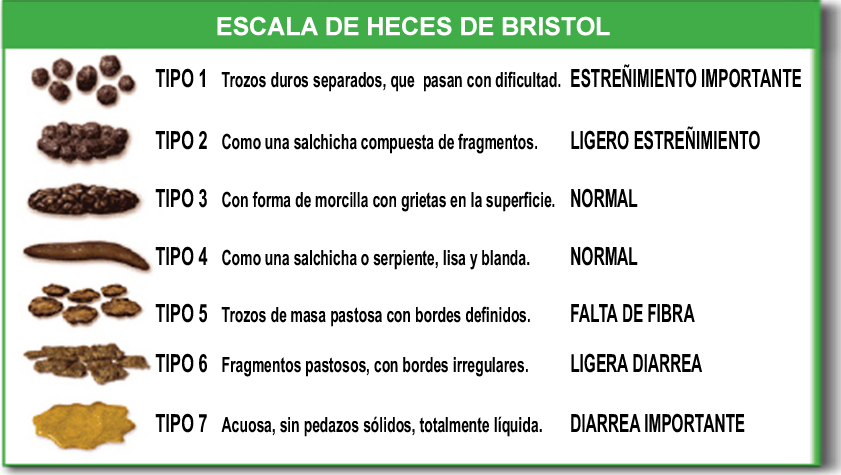
Other causes of black poop
Poop that looks like tar is often a sign of bleeding in the digestive tract. Some causes include:
- Bleeding from stomach ulcers
- Bleeding sores in your esophagus from acid reflux
- Bleeding from noncancerous tumors in the upper GI tract
- Cancer
If you don’t think black poop came from what you ate, you need to talk to your doctor.
If you see red or reddish poop in the toilet, don’t be alarmed right away. First ask yourself if you’ve had red foods lately.
Is your diet causing red or reddish poop?
Several foods can change the color of your stool to a pink or reddish color:
- Beets
- Tomato soup
- Gelatin dessert
- Red drinks
Other causes of red or reddish poop
If you don’t think your diet is the cause, the red you see may be blood. And if it’s bright red, the blood likely comes from the lower part of your digestive tract.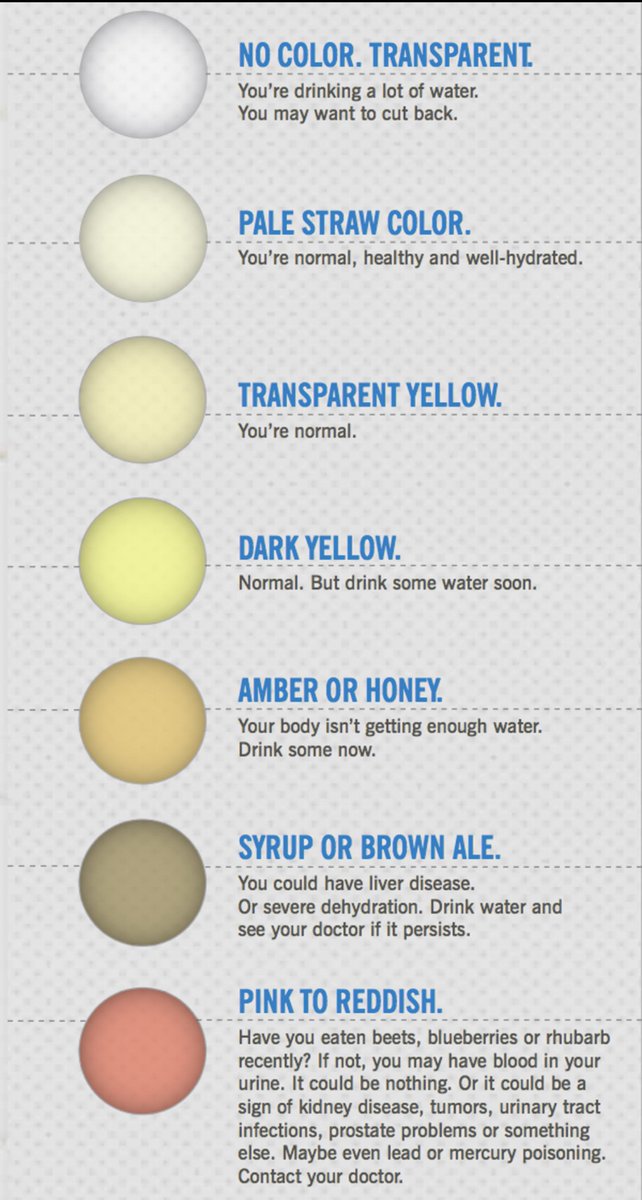 Common causes include:
Common causes include:
- Noncancerous tumors
- Cancer
- Inflammation in the colon, called colitis
- Growths called polyps in your colon
- Conditions caused by small sacs in the wall of the colon, called diverticular disease
- Hemorrhoids
Call your doctor if you see red that’s probably not from food you ate.
Poop can often come out the color of the food that went in, especially if you have diarrhea. If your poop has an orange hue, it’s most likely due to some orange foods.
Is your diet causing orange poop?
Foods that have beta-carotene can turn your poop orange, such as:
- Carrots
- Winter squash
- Pumpkin
- Sweet potatoes
Foods with orange coloring, such as sodas, candy, or gelatin dessert, can also give your poop an orange color.
Also, antibiotics and antacids that have aluminum hydroxide in them can make your stool orange.
Other causes of orange poop
Rarely, poop can be orange if you have a problem with your liver that causes it to make less bile than normal, or a blockage that keeps bile from leaving the liver and entering your system. But usually, if this is the case, your poop will be pale or clay-colored.
But usually, if this is the case, your poop will be pale or clay-colored.
Most of the time, poop that’s a different color from what you’re used to isn’t something to worry about. It’s rare for it to be a sign of a serious condition in your digestive system. But if it’s white, bright red, or black, and you don’t think it’s from something you ate, call your doctor.
Top Picks
Normal chair – what is it? Normal color and shape of feces in an adult
Normal stool in an adult
Normal stool – what is it? The norm of color and shape of feces in an adult
From the article you will find out what is the normal color of feces, its smell and volume, as well as how often it is normal to go to the toilet.
Phytomucil Norm
What we eat inevitably affects the state of the digestive system, so the nature of feces can change from day to day. Some of us may observe irregular bowel movements, changes in the consistency and color of feces, and other features. Before considering them as an alarming sign, it is important to decide what kind of stool a person should normally have.
Normal stool formation process
Normal feces are formed as a result of many processes occurring in the digestive system: the food bolus is moistened with saliva, enters the stomach, then bile and digestive enzymes begin to be produced. The food bolus gradually moves through the gastrointestinal tract – this process is called transit.
When the food bolus enters the large intestine, the process of reabsorption of water and minerals is activated. As a result, only a compacted mass remains, “processed” by enzymes, bile acids – this is how feces are formed.
Fecal masses move further into the lower intestines, this is facilitated by peristalsis or wave-like contractions of the intestinal walls. When the feces enter the rectum, urges come and defecation occurs.
When the feces enter the rectum, urges come and defecation occurs.
How often should a bowel movement occur?
How many times is it normal to go to the toilet in a big way? This indicator is individual for everyone. The frequency of bowel movements depends on how much a person has eaten, what is the percentage of vegetable fiber in his diet, how much water he has drunk. Intestinal motility is also affected by the degree of motor activity.
Normally, normal bowel activity allows the food bolus to pass through the gastrointestinal tract in 24-48 hours. If a person consumes a lot of fiber, peristalsis may be more active. Therefore, the frequency of stools from 3 times a day to 3 times a week is considered normal. Less often than once a day, people go to the toilet, whose diet mainly consists of meat, eggs, and up to 3 times a day, stools are observed among lovers of fresh vegetables and fruits.
Volume and color of feces are normal
With constipation, defecation can be daily, but feces may be separated in insufficient quantities.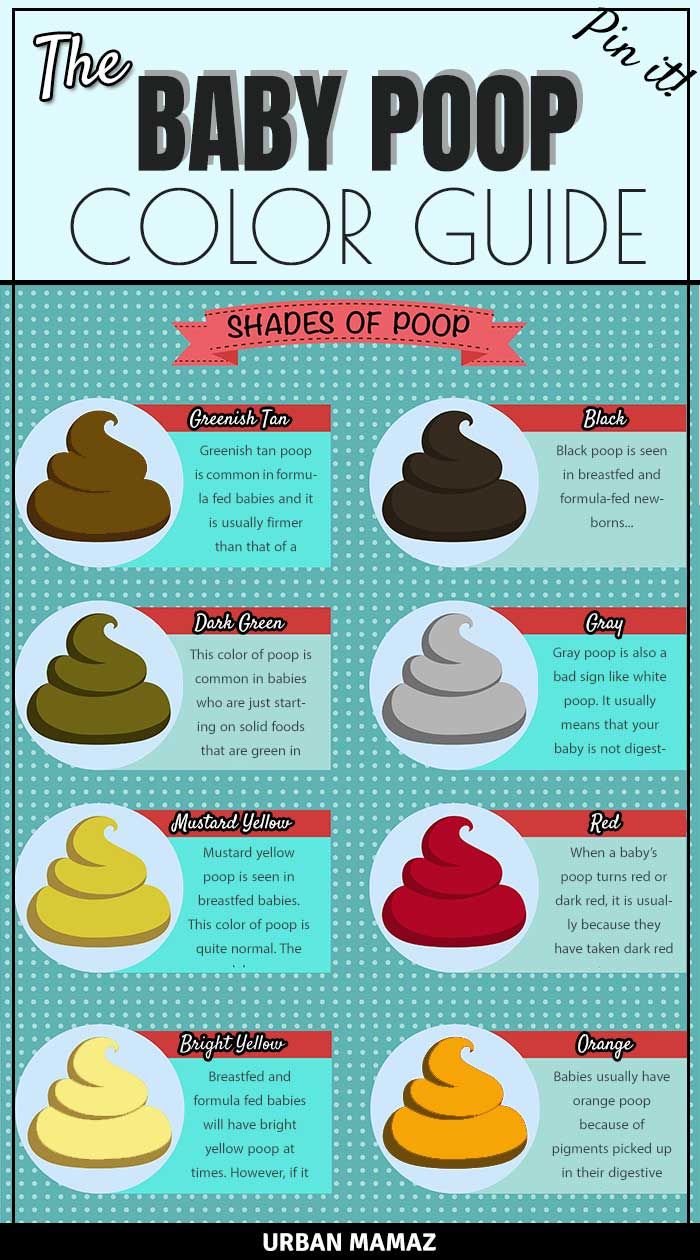 Therefore, volume matters, and this is also worth paying attention to. So, on average, a person excretes 100-200 g of feces per day. More feces are excreted in diseases of the digestive system, which include:
Therefore, volume matters, and this is also worth paying attention to. So, on average, a person excretes 100-200 g of feces per day. More feces are excreted in diseases of the digestive system, which include:
With these diseases, there are violations of the digestion and absorption of nutrients in the small intestine. The cause may also be functional impairment. For example, Doctor of Medical Sciences, Professor Ekaterina Yurievna Plotnikova in her work emphasizes that “patients with IBS may also experience changes in the shape and consistency of feces” (Plotnikova E. Yu., 2017, p. 4−31).
Reduced stool volume is often due to chronic constipation. When the food bolus moves slowly, excess water absorption occurs in the large intestine. Fecal weight less than 35 g per day indicates constipation.
Normal stools are brown in color, due to the presence of stercobilin, which is formed by the action of intestinal bacteria from bilirubin. However, the color of feces can be affected by diet, some drugs.
However, the color of feces can be affected by diet, some drugs.
Light brown is usually characteristic of a plant-based diet, light yellow can be observed when eating predominantly dairy foods, green after eating sorrel and spinach. The red tint should not scare those who have recently eaten beets or tomatoes. Black-brown may appear after eating a large amount of meat, dark red berries, black currants.
It is important to understand that normal adult stool color can vary from day to day. But there are alarming symptoms that sometimes indicate the presence of diseases. These include the following color changes:
Yellow-green color is characteristic of diarrhea.
A dark red color may indicate the presence of blood in the stool.
Black (tarry) stools may indicate bleeding in the upper gastrointestinal tract. Darkening of the stool may be associated with taking iron supplements.
The gray color of the stool may indicate an insufficient content of bile, diseases of the gallbladder or liver, a lack of enzymes that the pancreas does not produce enough.

White, clay color occurs in diseases of the liver, biliary tract, when the flow of bile into the intestine stops almost completely and the feces are discolored due to the lack of pigment.
Golden yellow can occur with unchanged bilirubin, which indicates an insufficient number of bacteria in the intestine, an imbalance of microflora. This condition can occur after taking antibiotics.
Sometimes a change in color may indicate an infectious disease. For example, with salmonellosis, feces become the color of swamp mud, with cholera, diarrhea appears like rice water – gray flakes float in the feces, and with rotavirus infection, the feces turn yellow and foam.
Separately, it is worth noting the appearance of fatty feces. Fecal masses that float in water, stick to the walls of the toilet and are difficult to wash off, may indicate indigestion, the presence of a large amount of fat and gases. This phenomenon is called steatorrhea.
Normally, stool contains almost no fat, since up to 98% of fat is completely absorbed. High-fat feces can indicate diseases of the pancreas, liver, biliary tract, and intestines. These diseases are dangerous because they disrupt the absorption of nutrients.
Smell of feces
Normally, the smell of feces is felt due to the presence of volatile compounds in it, which are formed as a result of bacterial breakdown of proteins. It is noteworthy that with constipation, the smell may disappear, because with slow transit, some of the volatile compounds have time to be absorbed.
If the smell of the stool has changed, it may be due to the presence of other aromatic substances released by intestinal bacteria. The smell mainly depends on the predominance of fermentation or putrefaction processes in the intestines.
So, the fetid smell of feces is often found in people who prefer mainly protein foods. This leads to increased putrefaction – the process of decomposition of proteins, and sometimes the smell is a manifestation of putrefactive dyspepsia.
Violation of the digestion of proteins in the upper digestive system is often accompanied by nausea, vomiting, belching, flatulence and other symptoms. The smell of rancid oil can be observed with a deficiency of pancreatic enzymes, as well as the absence of bile and fatty acids.
A sour smell of stool may be present with a dairy-vegetarian diet, the predominance of carbohydrates in the diet. In this case, fermentation processes predominate in the intestine, fermentative dyspepsia may develop.
Fermentation processes are accompanied by the formation of volatile organic acids. Also, a sour smell can indicate overeating, since the bacteria in this case get more food and produce a lot of acids.
Bristol stool scale
First of all, it is important to note that the presence of particles of plant food – seeds, peels of vegetables and fruits, a small amount of plant fibers is normal. However, animal products should not be in the stool.
Normal stool is 80% water. It is its content that determines the consistency. Approximately 20% are represented by ballast, which is formed from food residues, products secreted by the digestive system, as well as microbiota and its waste products. So, about half of the dense residue of feces is represented by intestinal bacteria.
It is its content that determines the consistency. Approximately 20% are represented by ballast, which is formed from food residues, products secreted by the digestive system, as well as microbiota and its waste products. So, about half of the dense residue of feces is represented by intestinal bacteria.
Normally, stools correspond to the shape and diameter of the lumen of the large intestine, and they also reflect its peristaltic activity. Therefore, normal stool has the shape of a cylinder, a rather dense, but not solid consistency. It is also called decorated.
The easiest way to determine the consistency of fecal masses is with the help of the Bristol scale. According to this classification, there are 7 types of feces:
Separate fragments are dense, hard lumps resembling nuts. They move with difficulty.
Formed, sausage-like feces, but consisting of lumps.
The feces are sausage-shaped, but with a ribbed surface or cracks.

Sausage-like, smooth and fairly soft feces.
Individual soft balls with smooth edges.
Loose fragments with jagged edges, mushy stools.
Watery stool without solid particles, thin.
The scale allows you to determine if there is a violation of bowel function. So, types of feces 3, 4 and 5 are variants of the norm for an adult. Types 6 and 7 are referred to as diarrhea when there is too much water in the stool.
However, mushy stools do not always indicate pathology, perhaps this is the intestinal response to a large amount of plant foods and accelerated peristalsis in connection with this.
Loose stools can be caused by several reasons, such as:
Allergic reaction, intolerance to certain types of food. With increased sensitivity to certain foods, the digestive tract is irritated and more mucus is produced. This changes the consistency of the stool to a more liquid one.
 To determine what exactly the reaction is, you can use a food diary. It is necessary to exclude the usual products one by one, observing the state of health and stool during the week.
To determine what exactly the reaction is, you can use a food diary. It is necessary to exclude the usual products one by one, observing the state of health and stool during the week.Lots of raw food and carbohydrates. Vegetable fiber leads to an increase in the volume of feces, their mushy consistency. Foods rich in carbohydrates can also have a laxative effect.
Diseases of the internal organs. As we said above, these can be pathologies of the pancreas, gallbladder, and so on. In the case of the presence of undigested food particles in the stool, we can talk about an insufficient amount of enzymes, stomach disease, inflammatory bowel disease.
Infectious and inflammatory diseases. These include, among other things, recently transferred viral and bacterial intestinal infections. The latter can be represented by food poisoning. After suffering acute inflammation, the gastrointestinal tract may not work properly for some time.

In addition, there are other types of feces by consistency. Ointment may accompany a deficiency of pancreatic enzymes, bile.
An alarming sign is ribbon-like feces or its too small diameter, since in this case the symptom is most often caused by mechanical compression, a decrease in the intestinal lumen due to the development of a tumor, pathological narrowing or adhesions, with a partial blockage of the intestine with solid fecal masses. The most prompt diagnosis is required in order to identify the disease and start treatment in a timely manner.
The first and second types of feces on the Bristol scale indicate the presence of constipation. The causes of sheep feces and the second type of stool are usually slow peristalsis, the slow movement of feces.
Due to the fact that they are in the intestines longer than expected, more water is absorbed from them. Therefore, with constipation, a hard stool appears, it contains no more than 40% liquid.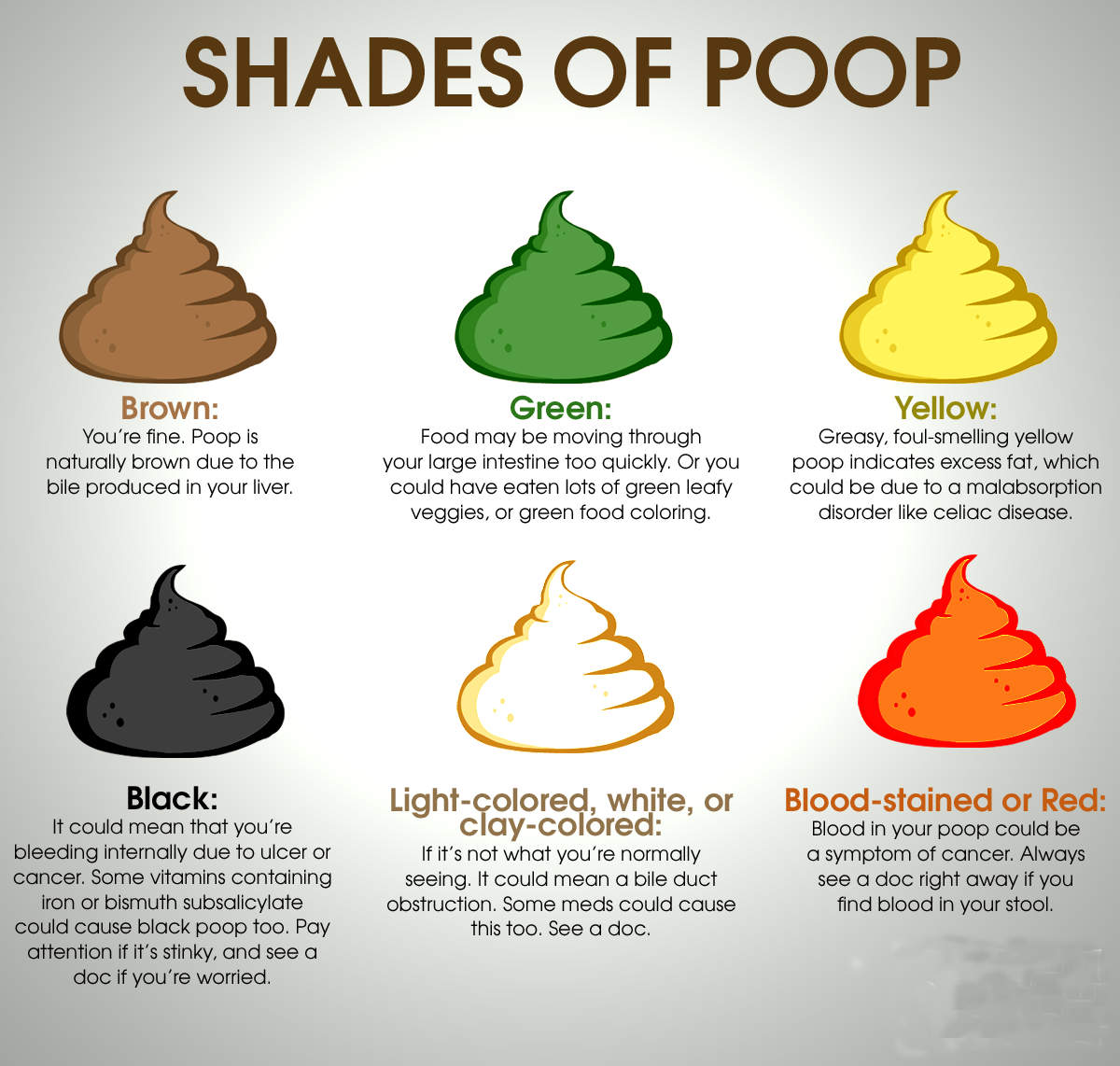 Fragmented feces indicate spasm of the colon.
Fragmented feces indicate spasm of the colon.
Constipation may be associated with spasm, or may develop due to other, additional reasons. Typically, hard, fragmented stools are associated with:
lack of plant foods, little fiber in the diet;
sedentary lifestyle, weakened peristalsis due to a sedentary lifestyle;
taking certain medicines;
insufficient water intake;
some diseases of the gastrointestinal tract.
In most cases, there are so-called alimentary constipation, which are associated with the nature of the diet. Supplementing the diet with fiber helps solve the problem. It is important to see a specialist and make sure that constipation is not caused by serious diseases of the digestive system, or receive appropriate treatment.
Laxatives, such as Fitomucil Norm, will help to cope with delayed bowel movements. The drug contains only natural ingredients in the form of a shell of psyllium seeds and the pulp of domestic plum fruit – sources of dietary fiber.
The drug contains only natural ingredients in the form of a shell of psyllium seeds and the pulp of domestic plum fruit – sources of dietary fiber.
Soluble fiber absorbs water, expands and turns into a gel, softening the stool, which contributes to easy bowel movements. Insoluble fibers stimulate motility, which also allows you to speed up the movement of feces.
This provides a gentle action without excessive stimulation of intestinal motility. Defecation occurs naturally, is not accompanied by spasms and pain. The drug does not cause diarrhea.
In addition to a mild laxative effect, “Fitomucil Norm” creates favorable conditions for the reproduction of beneficial bacteria in the intestine. The tool is not addictive and is approved for long-term use.
It is important to consult with your doctor about violations of the bowel movement. There may be certain limitations, and only a specialist will tell you how to deal with the problem.
The article is for informational purposes only. The authors are not responsible for the quality of services provided by third parties and for possible complications.
References
Plotnikova E. Yu. // Irritable syndrome
intestines: a manual for residents in the specialty 31.08.28 “Gastroenterology”. – 2017. – S. 4−31.
Children’s chair color: how to understand what is normal and what is not
Zainiddinova Rabiyat Salakhiddinovna
Candidate of Medical Sciences, Pediatrician, Neonatologist, Vaccine Prevention Specialist
Stool in healthy children does not always look the same. The state of the chair usually depends on the age, type of feeding, the period of development of the child. What does normal breastfeeding look like? We will describe the acceptable options for color, smell, consistency and find out how the baby’s stool changes within the normal range or when there are reasons for concern.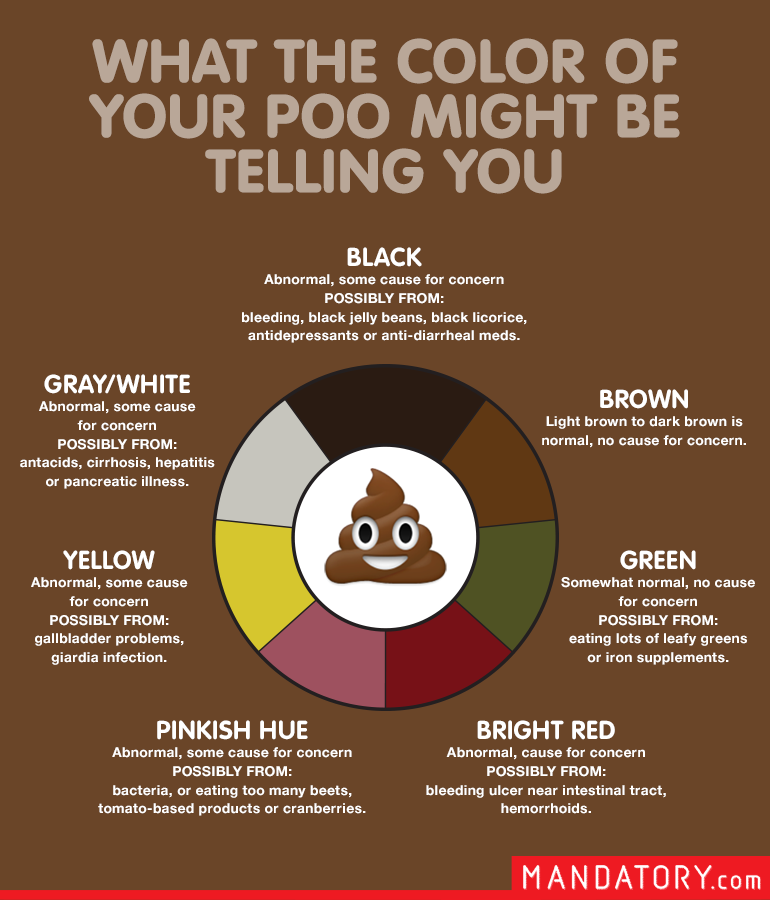 Candidate of Medical Sciences, pediatrician Rabiyat Salakhiddinovna Zainiddinova advises.
Candidate of Medical Sciences, pediatrician Rabiyat Salakhiddinovna Zainiddinova advises.
– Rabiyat Salakhiddinovna, what are the main differences between the stool of a newborn on breast, artificial and mixed feeding?
– For breastfed babies, when feeding with an adapted formula, and with a combination of these two types of food, a different type of stool is allowed. For example, a breastfed baby (HB) feels comfortable with a stool frequency of up to 5-8 times a day, and this is the norm. On artificial feeding (IV), the baby can empty the intestines up to 1 time per day or even once every 2 days, and this is also a variant of the norm. The color of the baby’s stool is also different: a mushy yellow stool in a baby on breast milk and a darker and more dense, thick stool in a baby on a mixture. On mixed feeding, the variability is higher, here both mushy and watery stools, and a variety of colors will be the norm.
– How does a child’s stool change from birth to a year?
– Immediately after birth, the stool is very dark (black) in color and is not exactly feces, but rather a mixture of desquamated epithelium, bile fragments, amniotic fluid and prenatal hair.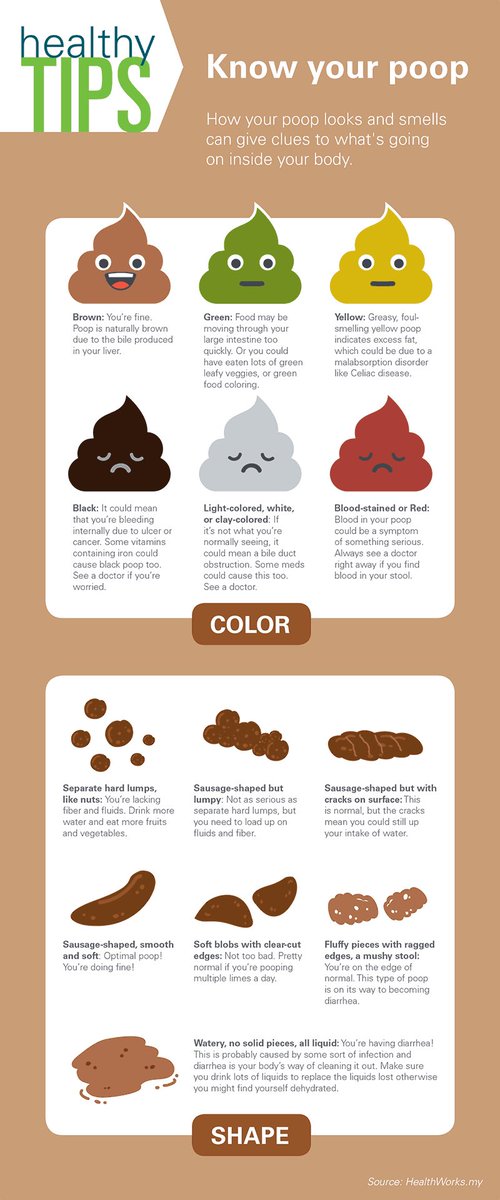 It’s called meconium. Such a dense dark stool can last up to 3 days, then a transitional stool appears – lighter, with the possible inclusion of green.
It’s called meconium. Such a dense dark stool can last up to 3 days, then a transitional stool appears – lighter, with the possible inclusion of green.
Green stools in infants are due to the high content of bilirubin, which is normal for the first months of life. As a rule, by the end of the first month, the stool acquires a stable, permanent appearance – it is mushy, yellowish, with small whitish patches.
– What color can a child’s chair be?
– Normal stool color can be all shades of orange and brown: mustard yellow, light brown, brown stool in babies is normal. The intensity of the presence of green color in the stool depends on the concentration of bilirubin in it, the state of the intestinal microbiota, the presence of food allergies or helminthic invasion. Very dense and dark stools are more typical for formula-fed babies, but it also becomes lighter and softer with the introduction of complementary foods into the diet.
If the chair does not fit into the range of familiar shades, it is worth taking a closer look at the condition of the baby. Is he too restless – is he not capricious, is his stomach swollen, has the color of his urine changed. Bloodshot, black or light-colored stools in a child are not the norm and a reason to seek medical help as soon as possible.
Is he too restless – is he not capricious, is his stomach swollen, has the color of his urine changed. Bloodshot, black or light-colored stools in a child are not the norm and a reason to seek medical help as soon as possible.
- Almost black baby stool – this color is typical only for meconium, for the stool of a newborn older than 1 week this shade is atypical.
- Gray stool resembling putty (greasy) – most often these are manifestations of a violation of the outflow of bile, often fermentopathy and, as a result, a violation of the formation of full-fledged feces.
- Red stool – often a manifestation of changes in the diet (with the introduction of beets, prunes). But it is necessary to clearly differentiate between red stools and stools interspersed with red or bloody.
Checklist: alarming symptoms that should alert parents, require evaluation of the child’s condition and supervision by a pediatrician
- Unusual stool colors
- Unusual inclusions in the stool
- Foam chair
- Fetid chair
- Loose stools with mucus
- Blood streaks in stool
- Watery stool (stool like water)
– Excluding color, how to determine the presence of pathology in babies by stool?
Foamy baby stool
– It can be an indicator of a deficiency of the normal microbiota, when the physiological process of digestion of food with the participation of microflora is disturbed and the stool changes its consistency. The condition may be transient, not affecting the quality of life of the child, or it may be a manifestation of an intestinal infection if accompanied by fever, anxiety, pain, vomiting and diarrhea.
The condition may be transient, not affecting the quality of life of the child, or it may be a manifestation of an intestinal infection if accompanied by fever, anxiety, pain, vomiting and diarrhea.
Diarrhea in infants
– Diarrhea in children in the first months of life may be caused by an infectious cause or not associated with infections.
Infant constipation
– Constipation can begin to form from the first month of life. The pediatrician should be alerted by such facts as the release of meconium in newborns for more than two days (usually the discharge occurs on the first day).
If a mother notices difficulty passing stool during the first month of life, it is imperative to pay attention to this pediatrician so as not to miss the symptoms of any serious diseases.
Occult blood in the feces of a child
– There is a medical analysis of feces for occult blood: it shows the presence of microveins of blood that cannot be diagnosed visually.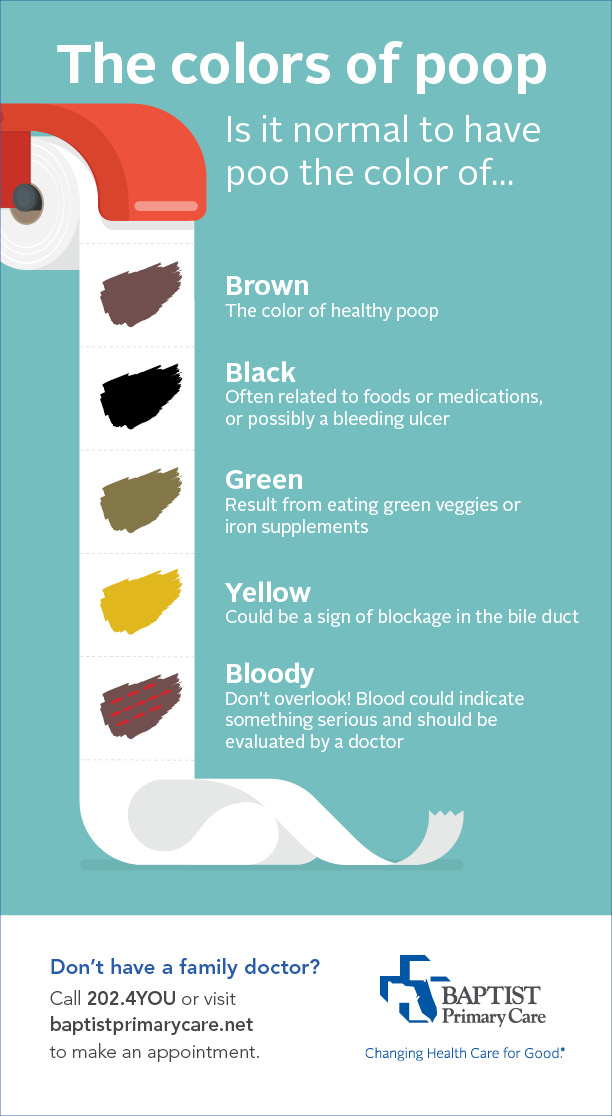 Why is it important not to miss this moment? If anal fissures give bright, visible streaks of blood in the stool of an infant, then hidden blood in his feces may be a sign of gastrointestinal reactions.
Why is it important not to miss this moment? If anal fissures give bright, visible streaks of blood in the stool of an infant, then hidden blood in his feces may be a sign of gastrointestinal reactions.
When assigning a small patient an examination for occult blood in the feces, the doctor looks for possible damage to the integrity of the gastric or intestinal mucosa. In children, due to the tenderness of their mucosa, such damage can be triggered by the listed allergens. Therefore, it is important to exclude a possible risk factor for the development or increase of food allergies.
Stool with mucus and smell
– Speaking of a large amount of mucus in the stool of a baby, you need to remember what mucus is. These are stretching secretions that are the product of the work of the intestinal mucosa: this is how it protects itself from an aggressive acidic or alkaline environment in the process of digesting food. Moreover, a lack of mucus can provoke constipation, although mothers are most often worried about the situation when there is too much mucus in the diaper.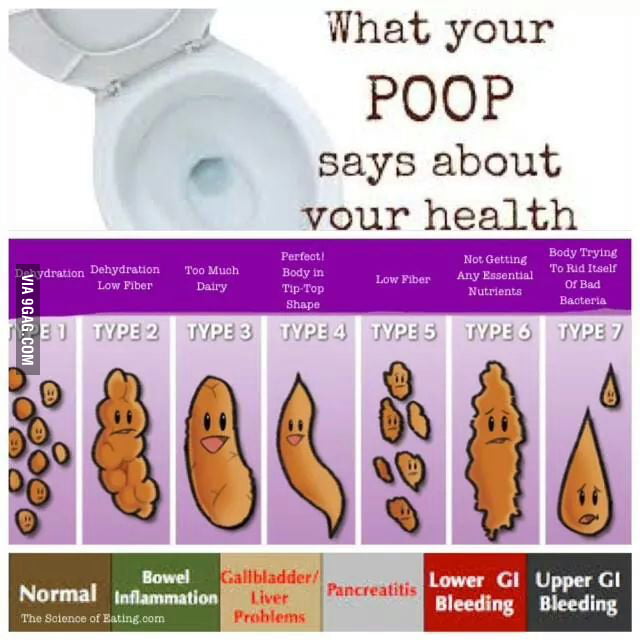
What to look for if there is a lot of clear or white mucus in the feces of a child
For mothers, an isolated abundance of mucus in the feces should not be an alarming symptom, because this in itself is not a full-fledged “red flag”.
Pieces of undigested food in feces
– For many parents, pieces of undigested food in the feces of a child are an alarming sign. They believe that if a child has not digested something, it means that he has some kind of stomach problems and he will not receive enough nutrients.
Causes of small particles of food in the stool
Bad smell
– Unpleasant odor, that is, an odor that is uncharacteristic of normal baby stools, can appear for several reasons.
- A sharp fetid odor of feces is due to an infectious process.
- Unpleasant putrid odor against the background of changes in the consistency of the stool appears with a deficiency of enzymes.
- A different smell and a different structure of feces in one bowel movement will be with constipation, when first a dense fecal stone comes out, and then formed feces.

– Rabiyat Salakhiddinovna, what symptoms may appear along with a change in the color of the stool – what do they talk about and when can they be considered the norm ?.
– As a rule, the variability of shades of the stool itself is acceptable. Dangerous colours: brightly colored blood-streaked, black, greyish-white stools in a child.
When are some of the symptoms associated with a change in stool acceptable?
— What to do to normalize the baby’s stool?
– From a pediatric point of view, it is necessary to mention the presence of surgical diseases in children – those that in pediatrics go under the general name “acute abdomen”. This is a whole list of acute surgical conditions at an early age, which are manifested primarily by abdominal pain and unusual behavior of the baby.
Download pdf
Checklist: when parents should not worry, and when to see a doctor
- The child cries very insistently, loudly and piercingly, the periods of calm are short, it is not possible to calm him down immediately, or he calms down for a short while and begins to sob again; or the condition is accompanied by fever, vomiting, general malaise, stool retention, or uncharacteristic heavy loose stools in infants.
 In this case, you need to contact a pediatric surgeon and undergo an abdominal ultrasound to exclude surgical pathology.
In this case, you need to contact a pediatric surgeon and undergo an abdominal ultrasound to exclude surgical pathology. - If the disease is caused by the course of a viral infection with abdominal pain syndrome (pain in the abdomen), then this is a manifestation of the intestinal syndrome on the background of a viral infection. Temperature, colic, flatulence and general malaise are allowed here. Despite the fact that the child’s condition is significantly normalized after taking antipyretic drugs, in any case, it requires examination and control of a pediatrician.
- Knowing about allergic reactions to certain types of foods, the children’s diet is expanded gradually. If a child has mild symptoms such as a change in stool patterns or signs of discomfort such as a single bout of vomiting after taking a new product, then the product may have been introduced early and should be postponed for the time being. Parents need to observe the condition of the child, it is not necessary to immediately consult a doctor.

- During the period of teething, the baby is disturbed by temperature, colic, flatulence, frequent bouts of crying. In this case, the usual stool may change – a stool appears with an abundance of mucus, but without a fetid odor and foam impurities. And this is a situation that is quite acceptable by age, which can be observed by parents and does not require immediate contact with a pediatrician.
Checklist: color and consistency of stool in infants, norm and deviations
Every time, taking off the diaper, willy-nilly, the mother examines its contents. Of course, children’s health is manifested by many symptoms, and children’s stool can also serve as a marker of normal digestion. However, it must be remembered that the characteristics of the stool are extremely variable, they cannot always be the same, and this does not indicate the presence of pathology in the child. But if the baby’s stool has not been formed for several days or weeks, retains an unusual uncharacteristic smell, or has pronounced deviations from generally accepted norms, then it is recommended to consult a pediatrician.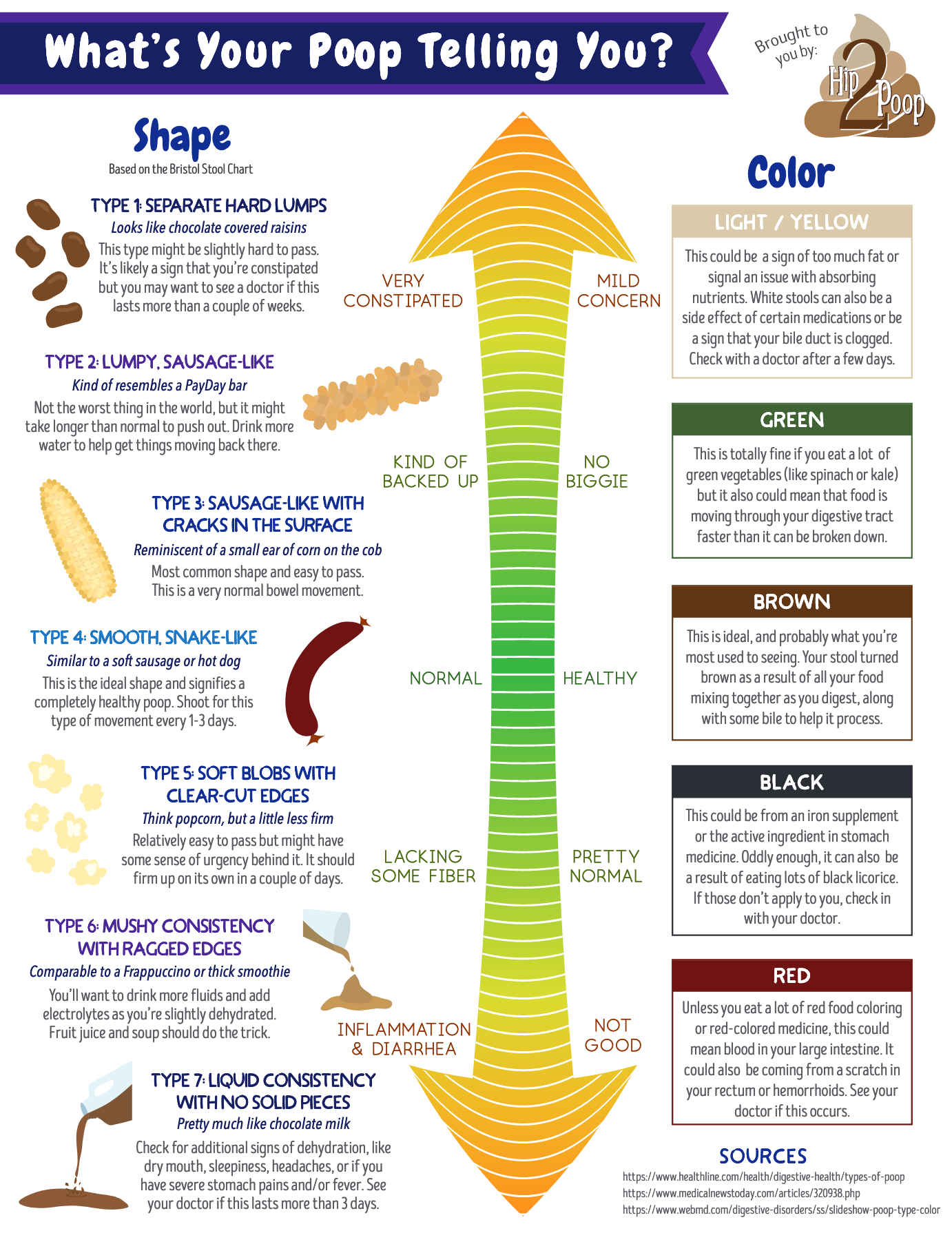



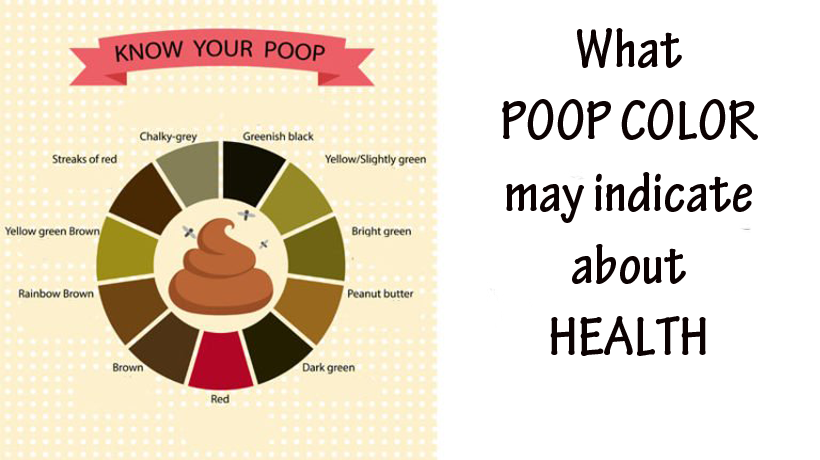 To determine what exactly the reaction is, you can use a food diary. It is necessary to exclude the usual products one by one, observing the state of health and stool during the week.
To determine what exactly the reaction is, you can use a food diary. It is necessary to exclude the usual products one by one, observing the state of health and stool during the week.
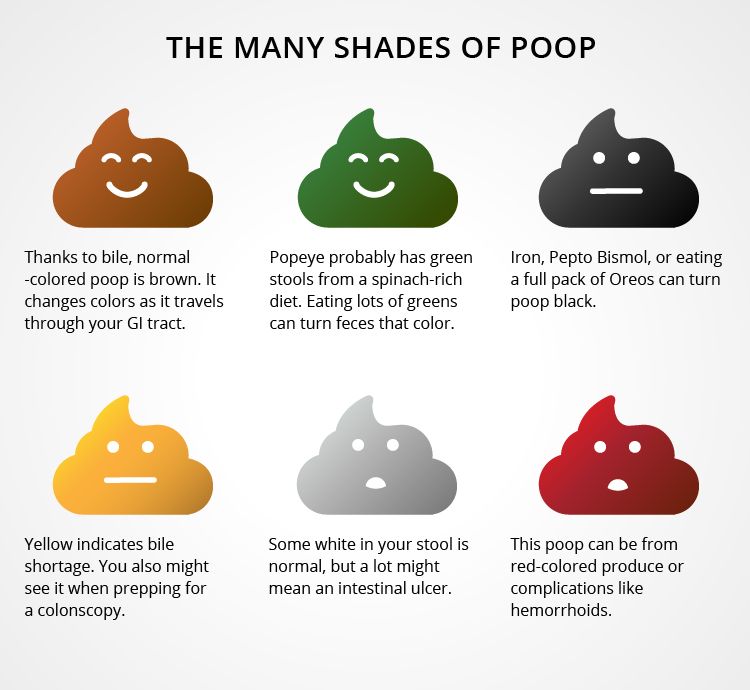
:max_bytes(150000):strip_icc()/healthy-and-unhealthy-stool-89211-color-V1-9cef9502a0a5433994307575289f34c7.png) In this case, you need to contact a pediatric surgeon and undergo an abdominal ultrasound to exclude surgical pathology.
In this case, you need to contact a pediatric surgeon and undergo an abdominal ultrasound to exclude surgical pathology.